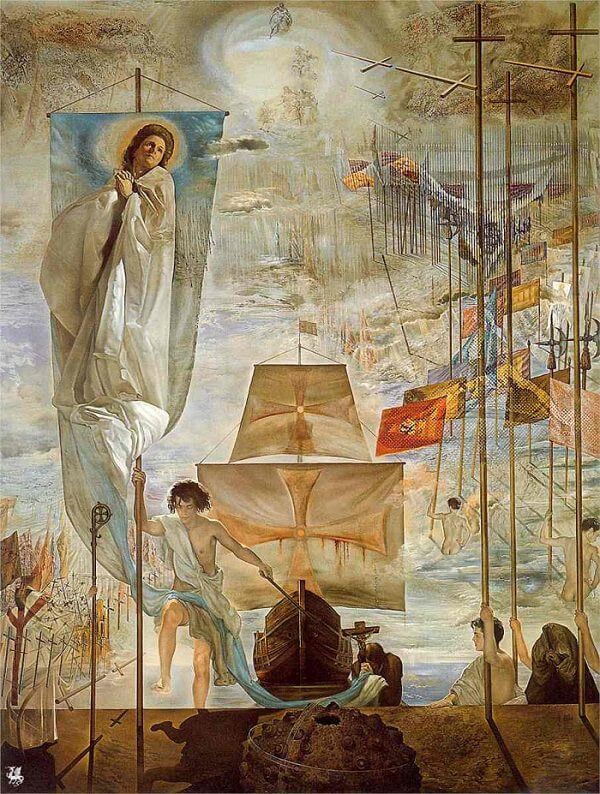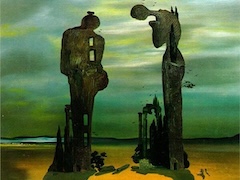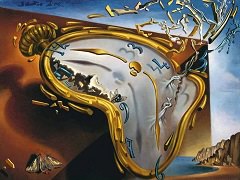Discovery of American by Christopher Columbus, 1959 by Salvador Dali

From the first day that he set foot on the pavement of Surrealist Paris, Dali has never ceased to proclaim that most of the pompiers painter and the ultra-academicians, especially Meissonier and the Spanish Mariano Fortuny, were a thousand times more interesting than the representatives of all the aging "isms" of modern art, and the African, Polynesian, Indian, and even Chinese art objects. Therefore, it was normal that, at a certain point in his life, he should come face to face with patriotism, and, as the pompiers did at the end of the nineteenth century, he decided to paint pictures glorifying the history of his country.
This oil antedated Santiago el Grande, which depicts Saint James of Compostela, patron saint of Span. Dali says that in this canvas he painted for the first time with an existentialist shiver: the shiver for the unity of the fatherland. Everything in it springs from the four petals of a jasmine flower exploding in an atomic cloud of creative genius. The Discovery of America by Christopher Columbus was a major step in Dali's paintings of that period.
Here one finds for the first time, brought together and intimately mixed with previous styles, the technique of his corpuscular period. In this canvas, the figure on the banner is Gala, and the monk kneeling and holding the
crucifix is Dali.
It may seem surprising to say that Dali decided to paint pictures glorifying his country and then show Columbus discovering America. However, it has been argued that Columbus was a Spaniard. He never wrote anything in Italian;
all his writings are in Spanish, and some historians believe that his family was forced to leave Spain and flee to Italy. The Catalonians firmly believe that he was from Catalonia. Therefore, to Dali, this was the logical beginning of his historical paintings.























